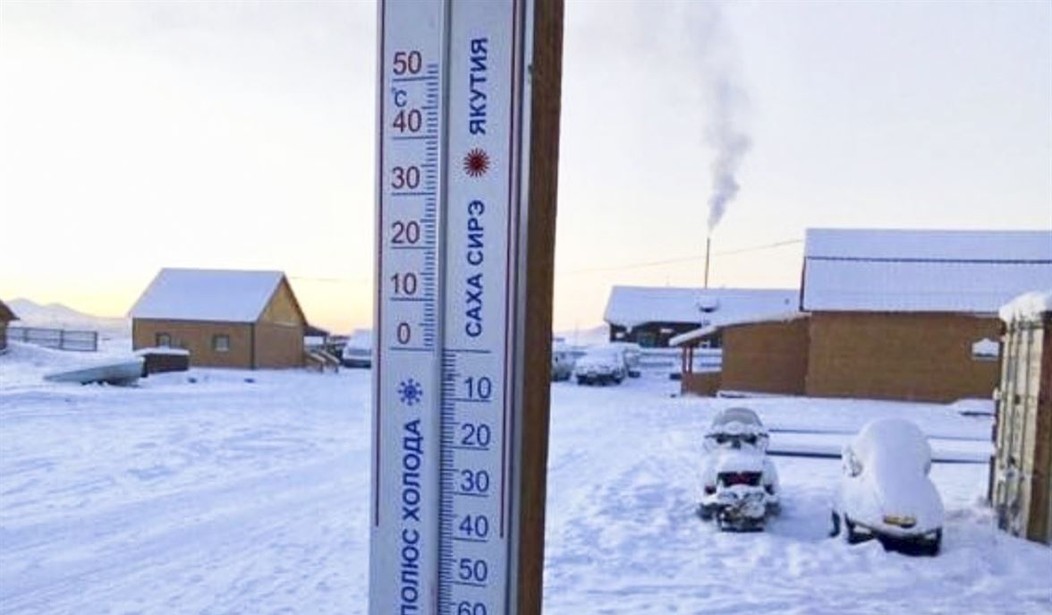This seems like an appropriate time for a story like this to pop up since it involves both smoke clouds and climate change. You probably heard how AOC was quick to blame the clouds of smoke wafting down from the Canadian wildfires last week on climate change. As you likely expected without even needing to check, that turns out to be nonsense. But the underlying facts that prove its nonsensical nature turn out to be well rooted in science. And researching this question turns up something even more interesting, which we’ll get to in a moment.
You should check out the work of veteran meteorologist Anthony Watts of the Heartland Institute. He’s been studying the weather and the climate in general for a very long time. He travels around the country inspecting meteorological equipment and studies historical weather data from around the world. One of the first findings he would like the public to be aware of is that not only are wildfires common in many parts of North America, but the reality is that in the 21st century, they have actually been less numerous than they were in the past. They’re just getting more attention from the press and on social media.
Rather than focusing discussion on what the real or imagined harms may be, how to mitigate them, and how to help people, climate activists are taking the opportunity to blame “climate change” for the smoke. The reality is wildfires are becoming less frequent and severe as the planet modestly warms. As wildfires become less frequent, it is nonsensical to blame the few wildfires that remain on climate change…
“Peer-reviewed studies and verified satellite observations show beyond a shadow of a doubt that wildfires in the long term, mid-term, and short term have become less frequent and less severe as the Earth modestly warms. The likely reason is the measured increase in evaporation from the world’s oceans, which has resulted in more frequent global precipitation.”
That’s not the shocking part of the story, however. When discussing the “modest warming” that the planet has exhibited, there is a need to have solid data. But as Dr. Watts has examined weather stations around the country, he has discovered that the available data may be nearly useless when attempting to quantify very slight changes in average temperatures. That’s because more than 90% of the data is “corrupted.” And the reason for that is the reality that the vast majority of thermometers that NOAA relies on are improperly installed and maintained, leading to the recording of artificially higher temperatures.
A new study, Corrupted Climate Stations: The Official U.S. Surface Temperature Record Remains Fatally Flawed, finds approximately 96 percent of U.S. temperature stations used to measure climate change fail to meet what the National Oceanic and Atmospheric Administration (NOAA) considers to be “acceptable” and uncorrupted placement by its own published standards.
The report, published by The Heartland Institute, was compiled via satellite and in-person survey visits to NOAA weather stations that contribute to the “official” land temperature data in the United States. The research shows that 96% of these stations are corrupted by localized effects of urbanization – producing heat-bias because of their close proximity to asphalt, machinery, and other heat-producing, heat-trapping, or heat-accentuating objects.
In order to produce accurate temperature readings based on NOAA’s own published standards, thermometers are supposed to be in natural, “pristine” locations like fields, forests, hilltops, etc. But Dr. Watts’ research has revealed that more than 90% of NOAA thermometers are in inappropriate places. 96% are in parking lots, on buildings, against brick walls, or in other artificial environments. The bricks, asphalt and other human construction materials used in these environments artificially trap heat, leading to a “warming bias” in the collected data. Thermometers placed in natural settings register lower average temperatures.
That’s not to say that the cities, parking lots, and highways aren’t warmer. They clearly are. But it’s not because the planet overall is getting warmer. It’s because we build things that trap and retain more heat than Mother Nature would capture and retain if left to her own devices. This is one more excellent piece of data supporting a plan that I’ve been endorsing here for quite some time.
There is a way to reduce warming cheaply and relatively easily. And it doesn’t involve banning gas stoves, outlawing people’s cars, or decimating the fossil fuel industry. You just need to plant a trillion trees. There are innovative design projects in place allowing trees and shrubbery to be planted on and around buildings in urban areas, along with vast tracts of former forestland that should be restored. All of those plants will create shade, lowering the local temperature. They will simultaneously suck carbon dioxide out of the atmosphere and replace it with oxygen if you’re interested in that sort of thing. Sadly, trees do all of this on their own with no intervention from humans. That means they don’t make any money for people like John Kerry and his private jet-setting friends, so you’ll never hear them endorse it.







Join the conversation as a VIP Member